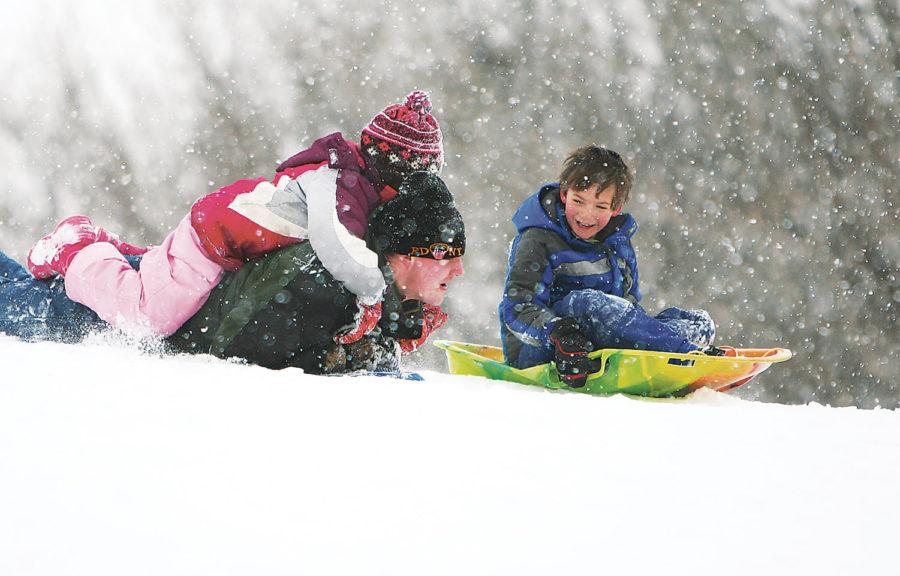La Nina leads to predictions of less snow
File photo: Jay Bai/Iowa State Daily
Houston Breshears, Juliana Breshears, 6, and William Breshears, 10, race on the snow hill of Veenker Memorial Golf Course near University Village.
December 1, 2010
A storm is brewing — but it isn’t predicted to dump much snow over Iowa this winter.
The storm is a La Nina, which means there are unusually cold ocean temperatures in the tropical pacific. This usually results in a drier winter in Iowa.
“It’s pretty safe to say we won’t have the huge amounts of snowfall that we’ve had the past few years,” said William Gallus, professor of geological and atmospheric sciences.
Gallus said a La Nina also tends to mean more swings in temperature — so this winter may start with a few months that are milder than average, and end with a few that are colder than average. This may make the winter seem shorter.
However, the predictions are uncertain.
Ray Arritt, professor of agronomy, said that because La Nina happens in the Pacific, the effects in Iowa may not be very strong. He predicted stronger effects in Montana and North Dakota, where it may be very cold, and in the Southwest, where it may be very dry.
The National Centers for Environmental Prediction are forecasting a “close to normal” winter in Iowa.
“That might mean it will be close to normal, or it might mean they have no idea,” Arrit said.
Gallus said most scientists who study climate issues are either focused on the extreme long term — global warming — or the extreme short term — how to make the day-to-day forecast more accurate. He said the five- to seven-day forecast tends to be pretty accurate, but it is difficult for existing computer models to predict farther than that.
Arritt is one of few to work on how to predict an entire season at a time. He said the information would be very useful for farmers, construction companies and others, but is still very difficult to predict. The seasonal weather is very dependent on trends in the oceans.
Gallus said there is about a 70 percent chance that La Nina will make this winter drier than normal. He said when people hear large numbers like that, they tend to think the forecast was “wrong” if it turns out to be different.
However, this isn’t necessarily the case. Gallus said there is also about a 10 percent chance that this winter will be wetter than normal. If it is, then the forecast wasn’t “wrong,” it will just be the 1 in every 10 years where a La Nina led to wetter conditions.







